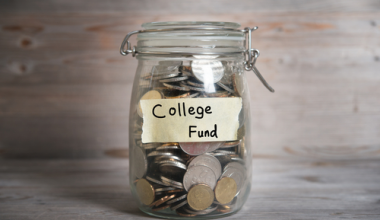As high school students work towards graduation, the pressure to maintain good grades and meet academic requirements can be overwhelming. Sometimes, despite their best efforts, students may need to catch up or complete the required coursework.
In these cases, credit recovery programs can provide a lifeline, helping students recover lost credits and stay on track for graduation. Credit recovery programs are to help high school students catch up on missed coursework, retake failed courses, and earn credits needed for graduation.
In this article, we’ll explore what credit recovery in high school entails, including strategies for success and frequently asked questions.
Whether you’re a student struggling to stay on track, a concerned parent, or an educator looking to support struggling students, understanding credit recovery can help you navigate the path to graduation.
Also check out: What is the Hardest Year of High School? How to Scale Through

Table of contents
- What is credit recovery in high school?
- How Credit Recovery Works in high school
- What to Look for in a Credit Recovery Option
- Guide on how credit recovery works in high school.
- Eligibility for credit recovery in high school
- Strategies to succeed in credit recovery in high school
- Frequently Asked Question
- Conclusion
What is credit recovery in high school?
Credit recovery in high school is a process that allows students to make up for failed or low grades in courses required for graduation. Credit recovery programs aim to help students stay on track to graduate with their peers and avoid falling behind in their academic progress.
These programs are typically available for students in grades 9-12 and can be during the regular school day, outside of normal school hours, or online.
Credit recovery programs offer a variety of strategies to help students catch up on missed coursework and stay engaged in their education. One common approach is personalized instruction, including one-on-one tutoring, small group instruction, or online coursework.
Some programs also offer flexible scheduling, allowing students to attend classes at different times or complete coursework at their own pace. Additionally, credit recovery programs often provide regular progress monitoring to ensure that students are making progress and staying on track to complete their coursework.
Students may be eligible for credit recovery programs if they have failed a course or received a low grade in a required course. The length of credit recovery programs can vary depending on how much credit you need. Students can typically earn full credit for completing all necessary coursework and assessments.
In summary, credit recovery programs in high school provide students with a second chance to recover lost credits and stay on track for graduation. These programs offer a variety of strategies to help students catch up on missed coursework and remain engaged in their education. They can be a valuable resource for students who need to catch up academically.
Also see this: What Is Homecoming In High School? (With Simple Faqs)
How Credit Recovery Works in high school
Credit recovery in high school is a process that provides students who have failed or received a low grade in a course with the opportunity to recover lost credits and stay on track to graduate. These programs offer a range of strategies to help students catch up on missed coursework and remain engaged in their education.
The first step in credit recovery is identifying the need for it. Students may need credit recovery if they have failed a required course or received a low grade in a course necessary for graduation. School counselors or administrators typically work with students to determine their eligibility for credit recovery programs.
Once eligibility is complete, students are typically for various options for completing the necessary coursework. Some schools may offer credit recovery courses during the regular school day, while others may offer classes outside of normal school hours or online.
Credit recovery programs often use personalized instruction to help students catch up on missed coursework. This may include one-on-one tutoring or small group instruction, which you can tailor to your individual need. Students may also be required to complete online coursework or assignments to demonstrate their mastery of the material.
Regular progress monitoring is an essential aspect of credit recovery programs. Teachers and counselors work closely with students to track their progress and ensure that they are making progress toward their academic goals. This may include regular check-ins, progress reports, or assessments to measure student mastery of the material.
One common concern with credit recovery programs is whether students learn the material they need to succeed in future courses. To address this concern, many programs require students to demonstrate mastery of the material through assessments or other means before they can earn credit for the course.
What to Look for in a Credit Recovery Option
Regarding credit recovery options in high school, there are several factors to consider to find the right program for your needs. Here are some key things to look for when evaluating credit recovery options:
#1. Accreditation
One of the most important things to consider when choosing a credit recovery program is accreditation. Ensure the program has certification from a popular accreditation agency, such as the Southern Association of Colleges and Schools or the Council for Higher Education Accreditation. This ensures that the program meets specific academic standards and that the credits earned will be acceptable by other institutions.
#2. Flexibility
Look for a credit recovery program that offers flexible scheduling options. Some programs may offer courses during the school day, while others provide evening or weekend classes. Online credit recovery programs can also be a good option for students who need more flexible schedules.
#3. Course options
Ensure the credit recovery program offers courses that meet your specific needs. Some programs may provide a wide range of courses, while others offer only a limited selection. Be sure to check that the courses offered to meet your school’s requirements for graduation.
#4. Quality of instruction
It’s vital to ensure that your credit recovery program provides high-quality instruction. Look for programs with qualified and experienced teachers or tutors that offer personalized education to help students catch up on missed coursework.
#5. Progress monitoring
A good credit recovery program should offer regular progress monitoring to ensure that students are making progress toward their academic goals. Look for programs that provide regular check-ins, progress reports, or assessments to measure student mastery of the material.
#6. Cost
Credit recovery programs can vary in cost, so it’s essential to evaluate your options carefully. Some programs may be free or low-cost, while others may be more expensive. Be sure to consider your budget when choosing a program.
#7. Support services
Look for a credit recovery program that offers additional support services, such as counseling or tutoring, to help students succeed. Some programs may also provide career counseling or other resources to help students plan for their future.
In summary, when evaluating credit recovery options, it’s essential to consider factors such as accreditation, flexibility, course options, quality of instruction, progress monitoring, cost, and support services. By evaluating your options carefully, you can find a credit recovery program that meets your needs and helps you stay on track for graduation.
Check out: What is a Quaker School? (Full Explanation with FAQs)
Guide on how credit recovery works in high school.
Here is a step-by-step guide on how credit recovery works in high school:
Step 1: Identification
The first step in the credit recovery process is identifying its need. Typically, students who have failed a course or received a low grade in a course required for graduation are eligible for credit recovery programs.
Step 2: Eligibility determination
School counselors or administrators will work with students to determine if they are eligible for credit recovery programs. This may involve reviewing transcripts, test scores, and other academic records.
Step 3: Program options
Once eligibility is complete, students get various options for completing the necessary coursework. This may include traditional in-person classes, online classes, or a combination of both.
Step 4: Course selection
Students may choose from various courses to fulfill their credit recovery requirements. It’s vital to ensure that the classes selected meet the school’s requirements for graduation.
Step 5: Instruction and support
Credit recovery programs often use personalized instruction to help students catch up on missed coursework. This may include one-on-one tutoring or small group instruction, which you can tailor to your needs. Students may also be required to complete online coursework or assignments to demonstrate their mastery of the material. Regular progress monitoring is an essential aspect of credit recovery programs.
Step 6: Assessment
Before earning credit for a course, students may need to demonstrate mastery of the material through assessments or other means. This ensures students have learned the material they need to succeed in future courses.
Step 7: Credit transfer
Once a student completes a credit recovery program, the credit earned is transferred to the student’s transcript. This allows the student to stay on track for graduation and meet the necessary academic requirements.
In summary, credit recovery programs allow students to recover credits for courses they have failed or not completed successfully. The process involves:
- Identifying the need for credit recovery.
- Determining eligibility.
- Selecting a program option and course.
- Receiving personalized instruction and support.
- Demonstrating mastery of the material.
- Transferring credit earned back to the student’s transcript.
By following this step-by-step guide, students can stay on track for graduation and achieve their academic goals.
Also related: What Is ROTC In High School? (Full Explanation With FAQs)
Eligibility for credit recovery in high school
Some factors determine eligibility for credit recovery in high school. Generally, students who have failed a course or received a low grade in a course required for graduation are eligible for credit recovery programs. Here are some key factors when determining eligibility for credit recovery:
Failed or incomplete course
The primary eligibility factor for credit recovery is the failure of a course or incomplete coursework that resulted in a low grade. Students who have received a grade below the passing mark or have not completed a course required for graduation may be eligible for credit recovery.
Number of credits needed
Students short on credits needed for graduation may also be eligible for credit recovery programs. The number of credits required can vary depending on the school district and state requirements.
Graduation timeline
The timeline for graduation is another important factor in determining eligibility for credit recovery. Students at risk of not graduating on time due to failed or incomplete coursework may be eligible for credit recovery programs.
Grade Level
Credit recovery programs may be available to students in any grade level, but eligibility criteria may vary depending on the student’s grade. Some programs may be specifically designed for high school juniors and seniors, while others may also be available to first- and second-year students.
Attendance record
Students’ attendance records may also be necessary when determining eligibility for credit recovery. Some programs may require students to have a specific attendance rate to participate.
Discipline record
Students with a history of disciplinary issues may face additional eligibility requirements or restrictions regarding credit recovery programs. Schools may require students to meet certain behavioral expectations or restrict program participation for students with a history of serious infractions.
In summary, eligibility for credit recovery in high school is by several factors, including failed or incomplete coursework, number of credits needed, graduation timeline, grade level, attendance record, and discipline record. By working with school counselors or administrators, students can determine if they are eligible for credit recovery programs and take advantage of these resources to stay on track for graduation.
Strategies to succeed in credit recovery in high school
Credit recovery programs offer a second chance for students to catch up on missed coursework, retake failed courses, and earn credits needed for graduation. However, these programs can be challenging and require dedicated effort on the part of the student. Here are some strategies to help students succeed in credit recovery programs:
Set clear goals
Students should identify specific goals for credit recovery, such as completing a certain number of assignments per week or achieving a particular grade. Students can stay focused and motivated throughout the program by setting clear goals.
Develop a schedule
Credit recovery programs often require significant self-directed work, so students must develop a schedule to stay on track. Students should set aside specific times each day or week to work on coursework and avoid procrastination.
Stay organized
Keeping track of assignments, deadlines, and progress can be challenging in a credit recovery program. Students should use organizational tools such as calendars, to-do lists, and progress trackers to stay on top of coursework.
Seek support
Credit recovery programs can be challenging, and students may need support from educators, counselors, or peers. Students should take advantage of available resources, such as tutoring or extra help sessions, to stay on track.
Engage with coursework
To succeed in credit recovery programs, students must engage with coursework and actively seek to understand concepts. This may involve watching instructional videos, completing practice problems, or seeking additional resources to supplement coursework.
Take breaks
Students need to take breaks and avoid burnout during credit recovery programs. Students should take breaks throughout the day to recharge and avoid becoming overwhelmed.
Celebrate progress
Celebrating progress can help students stay motivated and engaged in credit recovery programs. Students should acknowledge and celebrate their accomplishments, no matter how small, to build momentum and stay on track.
In summary, credit recovery programs require dedication, hard work, and focus on the part of the student. By setting clear goals, developing a schedule, staying organized, seeking support, engaging with coursework, taking breaks, and celebrating progress, students can succeed in credit recovery programs and stay on track for graduation.
See this also: What is Enrichment in School? (Full Explanation with FAQs)
Frequently Asked Question
Students who have failed a course or received a low grade in a required course may be eligible for credit recovery programs.
The length of credit recovery programs can vary depending on the student’s needs and the amount of credit they need to recover.
Credit recovery coursework is typically graded on a pass/fail basis.
Some schools may offer credit recovery courses during the regular school day, while others may offer classes outside of normal school hours or online.
Students can earn full credit for credit recovery courses if they complete all required coursework and assessments.
Conclusion
In conclusion, credit recovery programs can provide a crucial opportunity for high school students to catch up on missed coursework, retake failed courses, and earn credits needed for graduation. By understanding the eligibility criteria, available options, and strategies for success, students can take advantage of these programs to stay on track and achieve their academic goals.
Whether through online courses, summer school programs, or in-person classes, credit recovery can help students overcome academic setbacks and progress toward graduation. Students can access the resources and support they need to succeed by working closely with educators, counselors, and families.
If you or someone you know is struggling with coursework or facing challenges on the path to graduation, consider exploring credit recovery options and taking steps toward academic success. Students can overcome obstacles and achieve their full potential with dedication, hard work, and support.
Recommendations
- What is Enrichment in School? (Full Explanation with FAQs)
- What is the Hardest Year of High School? How to Scale Through
- What is Passing in College?(Best Explanation with FAQs)
- What is Intervention in Education (Full Explanation with FAQs)
References
- https://study.com/ – What is credit recovery?
- https://www.theedadvocate.org/ – What parents need to know about credit recovery


